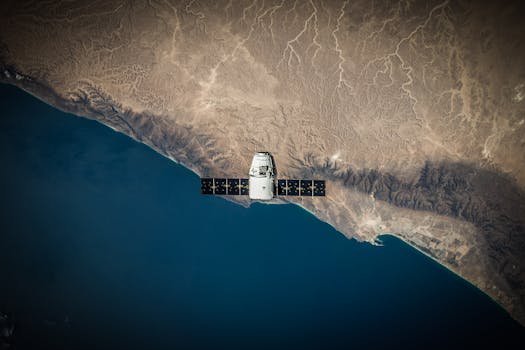
MEO Satellites: Revolutionizing Global Connectivity with Medium Earth Orbit Technology
MEO satellites, or Medium Earth Orbit satellites, are a type of satellite that operates in an orbit between 2,000 and 36,000 kilometers above the Earth’s surface. This orbit is higher than Low Earth Orbit (LEO) satellites but lower than Geostationary Orbit (GEO) satellites. MEO satellites are designed to provide global coverage and are used for a variety of applications, including navigation, communication, and Earth observation.
MEO satellites have several advantages over other types of satellites. They have a larger footprint than LEO satellites, which means they can cover a larger area of the Earth’s surface. They also have a lower latency than GEO satellites, which makes them more suitable for real-time applications. Additionally, MEO satellites are less affected by the Van Allen radiation belts, which can damage satellite electronics.
History of MEO Satellites
The first MEO satellite was launched in the 1970s, but it wasn’t until the 1990s that the technology began to gain widespread acceptance. The first commercial MEO satellite system was launched in 1996, and since then, several other systems have been launched. Today, MEO satellites are used by a variety of organizations, including governments, telecommunications companies, and navigation providers.
One of the most well-known MEO satellite systems is the Global Positioning System (GPS), which is operated by the United States Department of Defense. The GPS system consists of a constellation of 24-32 satellites that provide location information to GPS receivers on the ground. The system is used for a variety of applications, including navigation, timing, and surveillance.
Applications of MEO Satellites
MEO satellites have a variety of applications, including navigation, communication, and Earth observation. They are used by a variety of organizations, including governments, telecommunications companies, and navigation providers. Some of the most common applications of MEO satellites include:
Navigation: MEO satellites are used to provide location information to GPS receivers on the ground. They are also used for other navigation applications, such as aircraft navigation and maritime navigation.
Communication: MEO satellites are used to provide communication services, such as voice and data transmission. They are often used in remote or underserved areas where terrestrial communication infrastructure is limited.
Earth Observation: MEO satellites are used to collect data about the Earth’s surface and atmosphere. They are used for a variety of applications, including weather forecasting, climate monitoring, and natural resource management.
Benefits of MEO Satellites
MEO satellites have several benefits, including global coverage, low latency, and high reliability. They are also less affected by the Van Allen radiation belts, which can damage satellite electronics. Additionally, MEO satellites have a longer lifespan than LEO satellites, which makes them a more cost-effective option for many applications.
MEO satellites also have several advantages over other types of satellites. They have a larger footprint than LEO satellites, which means they can cover a larger area of the Earth’s surface. They also have a lower latency than GEO satellites, which makes them more suitable for real-time applications.
Challenges and Future Developments
However, researchers and developers are working to overcome these challenges and improve the performance of MEO satellites. Some of the future developments in MEO satellite technology include the use of advanced propulsion systems, such as electric propulsion, and the development of new materials and technologies, such as inflatable spacecraft.



